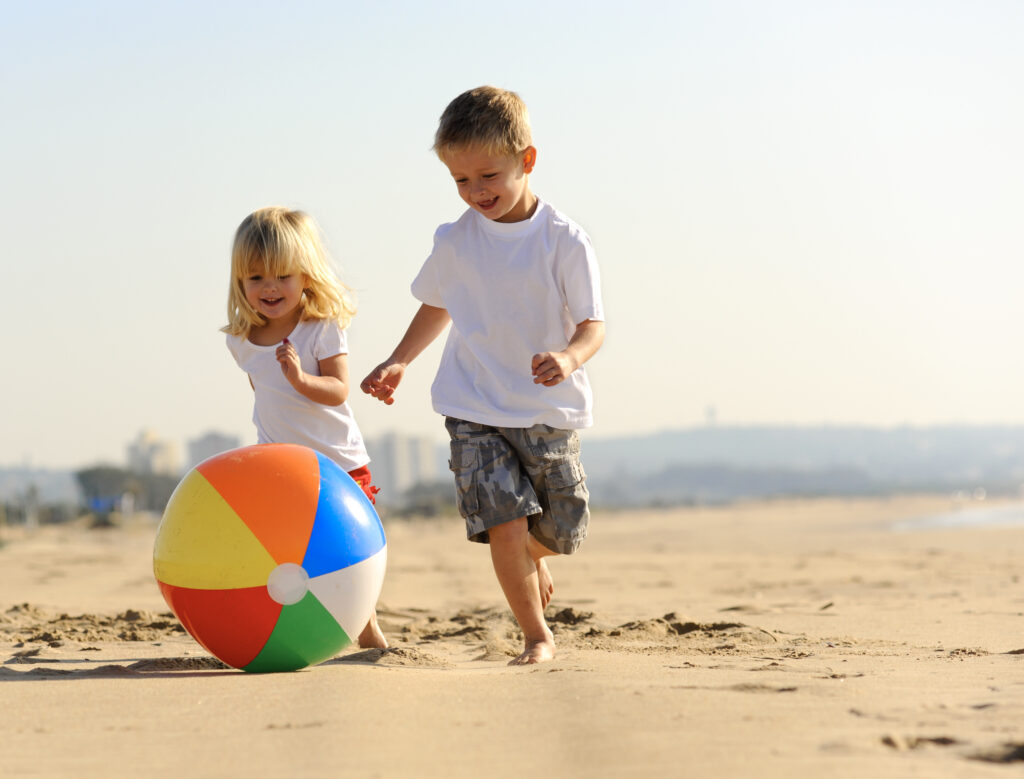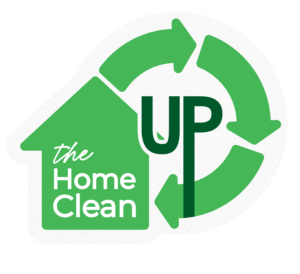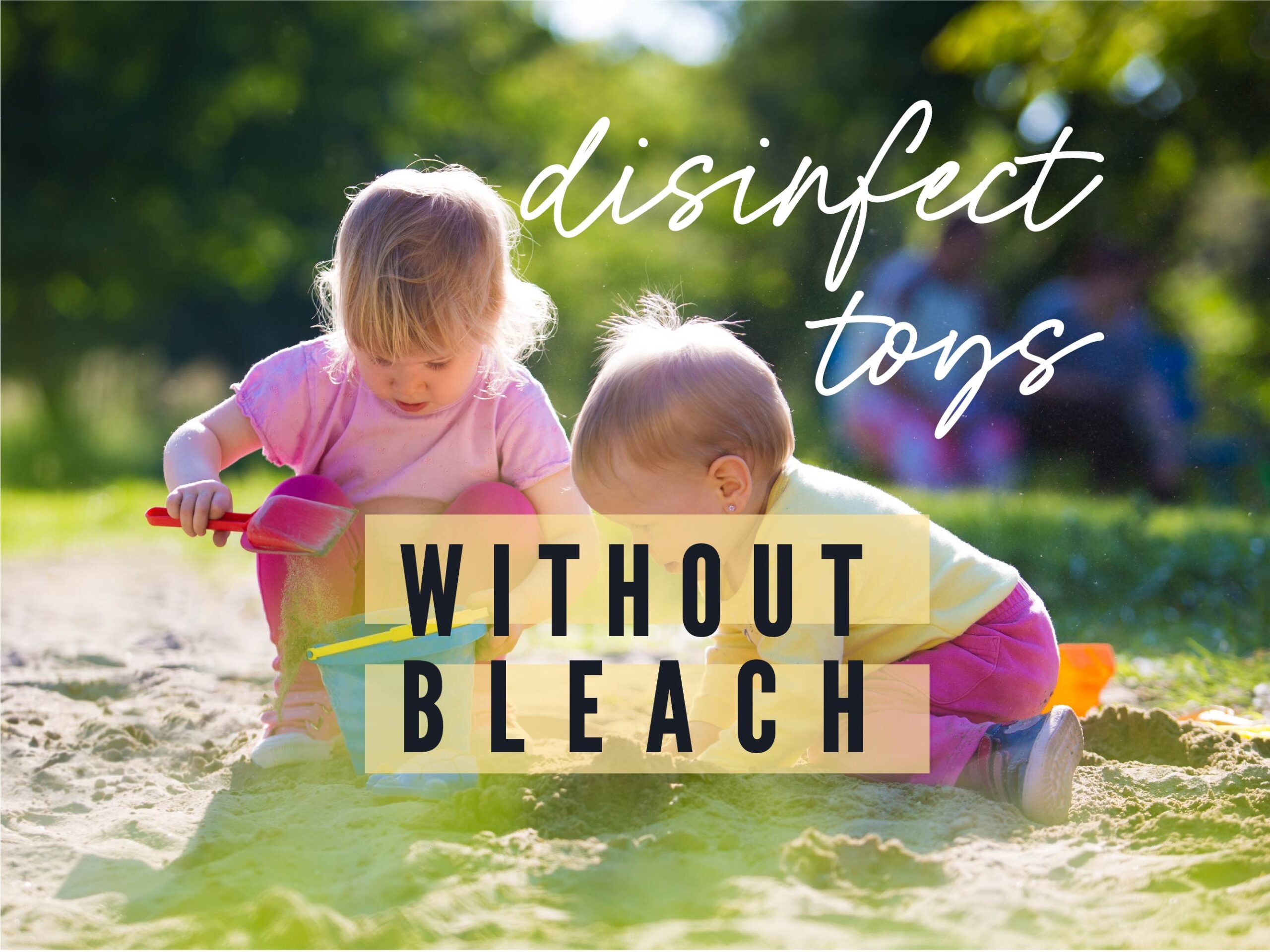Have you ever looked at your children playing in a sea of colorful toys and wondered about the invisible world of germs hiding among the fun? With the joy that toys bring into our homes also comes a responsibility. It’s important to ensure these objects of adventure and discovery, these cherished belongings, remain as clean and hygienic as possible. Because when we delve into a child’s world, these toys are more than mere playthings – they are companions, tools for learning, and objects of comfort. But are they clean? And if not, How to clean baby toys?
So, keeping this beautiful world sanitized isn’t just about keeping things tidy; it’s a key step in promoting a healthy, safe environment for our young ones.
How Often Should Toys be Cleaned?
Generally, toys should be cleaned once a week. However, if your child has been sick, the toys should be cleaned immediately to prevent reinfection. Similarly, if a playdate has taken place or your child returns from daycare, cleaning the toys minimizes the chance of transmitting possible infections.
Plastic and wooden toys are often the most durable and the most straightforward to clean. Start by gathering all these toys into a separate bin. Once collected, these toys can often be cleaned in your dishwasher on the top rack. Just make sure any painted wooden toys are colorfast and the paint won’t chip or fade in the dishwasher. The combination of heat and dish detergent in the dishwasher does an excellent job sanitizing these toys. After the cycle, make sure to dry them thoroughly, particularly wooden toys, as excess moisture could warp the wood or cause it to crack.
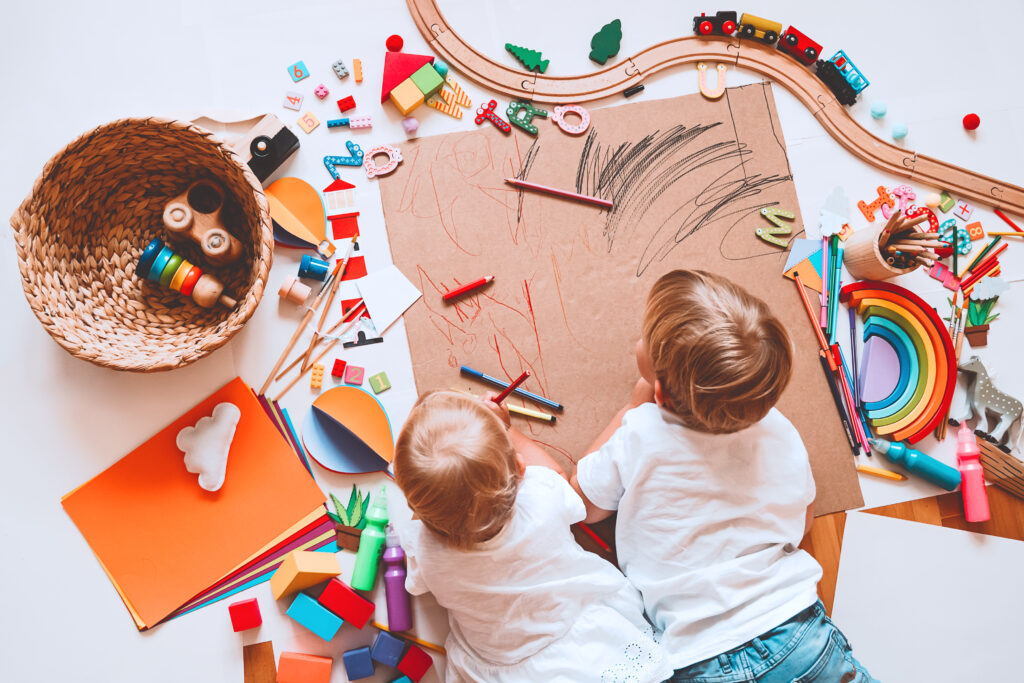
How to Gently and Safely Clean Toys without Bleach?
Step 1. Sort Plastic & Wooden Toys
Step 2. Fill Sink w/ Warm Water
Step 3. Add 5oz OdoBan Disinfectant
(5oz Disinfectant per Gallon of Water)
Step 4. Submerge toys & soak for 5 mins
Step 5. Air Dry Completely
Bleach is often considered a go-to cleaning agent for its strong disinfecting power. But it might not be the right option for toys due to the strong chemicals that might be harmful to children’s health. This is especially a consideration if we talk about teether toys cleaning.

Here’s how you can wash teether toys without bleach. Fill a large bucket or your sink with warm water and add a gentle, child-safe dish soap or alcohol based disinfectant; OdoBan is our preferred choice as it is widely used in the medical & hospitalization industry for its hypoallergenic qualities & fresh scent (sold at The Home Depot). Using a soft sponge or cloth, scrub each teether toy gently, paying attention to crevices and hard-to-reach spots where dirt and germs may hide. Rinse the toys thoroughly under warm running water to ensure all soap residues are gone. Finally, dry the toys completely. This is a crucial step, as dampness can encourage mold growth, leading to a whole new set of problems.
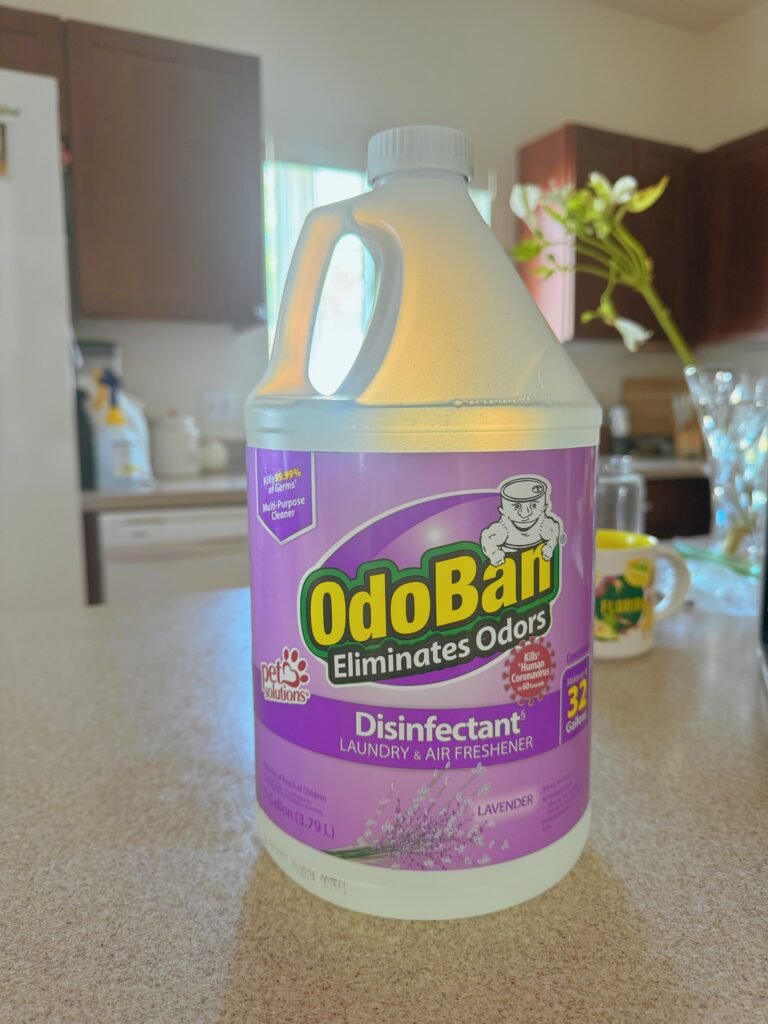
Stuffed Animals
Stuffed animals, those fluffy companions, are another story. They need a gentler touch but you should always make sure to disinfect stuffed animals toys. Let us show you how:

Place these cuddly creatures in a separate bin. Most of these can be cleaned in your washing machine, but they should be put in a mesh laundry bag for extra protection. This helps prevent the wear and tear that can occur from the machine’s agitation. It’s best to use a hypoallergenic and chemical-free toys cleaning detergent to ensure these toys remain safe for your little ones, who often hug, snuggle, and sometimes even kiss these plush pals. After washing, let them air dry. Some can be tumble dried on a low-heat setting, but always check the care label first.
Hand Wash Only
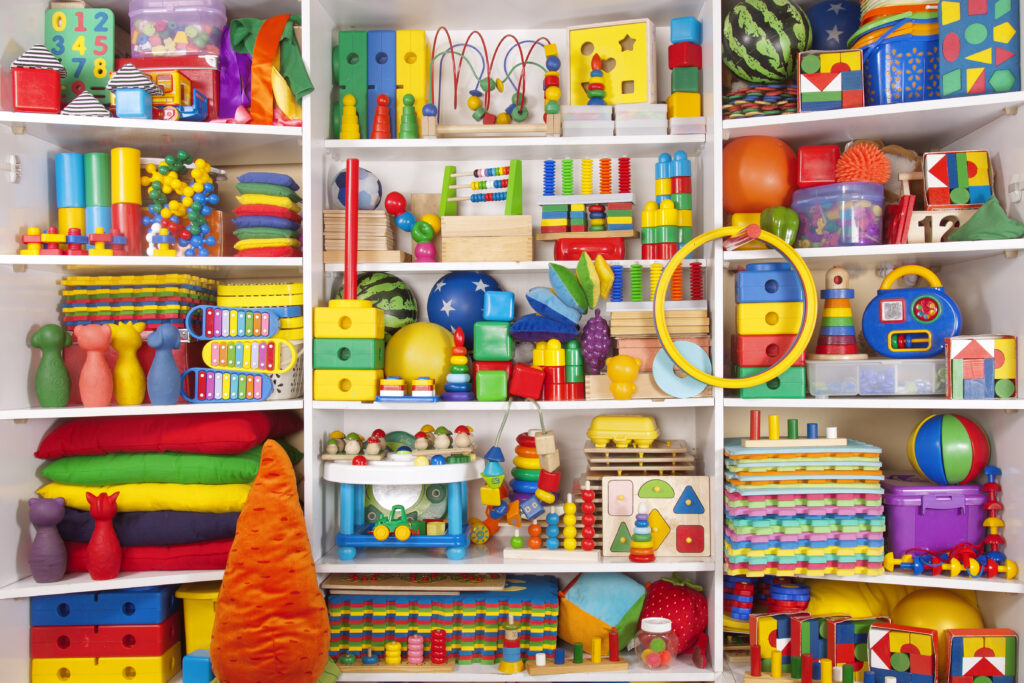
Then we have those toys that need the most care – the ones that must be hand washed. These are typically toys with electronic components, toys with delicate materials, or toys that might just not survive the rough and tumble of a machine wash. You can use a damp cloth or just a wet tissue to clean these. Make sure to be thorough as you can leave spots that can be a cause of mold. Moreover, ensure that you dry them properly before giving them back to the child.
The Ins and Outs of Cleaning Plastic Toys & Wood Toys

Plastic and wood toys are a staple in most households – loved by children for their colorful designs and fun shapes, and appreciated by parents for their durability. But just like any other type of toy, these too need a good cleaning every now and then. The great news is that, with the right approach, cleaning plastic and wood toys can be a breeze.
You might have thought “Can I wash toys in dishwasher?” While it might be surprising, many plastic and wooden toys can take a trip through the dishwasher. The strong jets of water combined with the heat and detergent do a fantastic job of removing grime and sanitizing toys. Always check the manufacturer’s guidelines to ensure the toys are dishwasher-safe. Some wooden toys may warp with the heat and moisture, while certain plastic toys might not handle the high temperatures well.
How to Clean Plush Toys?

Stuffed animals, with their soft bodies and often comforting features, hold a special place in children’s hearts. They provide companionship, solace, and joy. Yet, these fluffy friends can also be a harbor for dust mites and germs, making regular cleaning essential.
The best way to clean toys (stuffed animals) is to treat them gently to maintain their shape and softness. A washing machine can do this job efficiently without damaging them, provided some precautions are taken. Firstly, always check the care labels on your stuffed animals. Some may only be surface-washable or could have specific washing instructions.
For machine-washable toys, read laundry tags on toys before throwing them in for the wash. Add 8 ounces of OdorBan if there is a full laundry load, and 4 ounces to a half load or smaller laundry load. Tumble dry on low until plush is fully dry (repeat tumble dry if necessary). You can always use a mesh laundry bag. This bag acts as a protective barrier against the rough-and-tumble of the washing machine. It’s also a good idea to wash them on a gentle cycle with cool or warm water, as hot water can damage certain fabrics or cause colors to fade.
Why is Bleach Bad For Cleaning Toys?
Bleach is known for its disinfecting prowess. It’s effective against a broad spectrum of microbes and can quickly sanitize surfaces. However, its potency is also its downfall when it comes to cleaning toys. Bleach can cause skin and eye irritation, and its fumes can be harmful when inhaled, leading to respiratory distress. Furthermore, if ingested, bleach can be toxic – a risk too great when we’re dealing with toys that children often put in their mouths. Therefore, it’s vital to find safe and equally effective alternatives to bleach for disinfecting children’s toys.
Why Are Cleaning Toys Important For Health Reasons?
Common illnesses among children, like the flu, colds, and various viral infections are often spread through contaminated surfaces. This is particularly true for toys, which move through little hands and frequently end up in small mouths, especially when we talk about toddlers. So, How to prevent baby from getting sick with toys?
Regularly disinfecting toys reduces the risk of these illnesses and ensures a healthier environment for them to grow and thrive. So the bottom line is simple – clean toys contribute to a healthy child and you should know how to disinfect a large amount of toys for your children’s health sake.
After washing, gently reshape the stuffed animal if needed and let it air dry. This will help retain its original shape and fluffiness. Refrain from using a dryer unless the care label specifically mentions it’s safe to do so, as the high heat can damage the toy.
Conclusion

At first glance, cleaning and disinfecting your child’s toys may seem like an arduous task, especially if you’re dealing with a trove of playthings. But with this comprehensive guide at your disposal, you’re well-equipped to tackle this task. Always opt for a hypoallergenic and chemical-free one. These detergents are free of dyes, fragrances, and other chemicals that could potentially irritate your child’s skin. By maintaining this cleanliness, we can ensure our children continue to explore, learn, and grow in the best possible environment.
